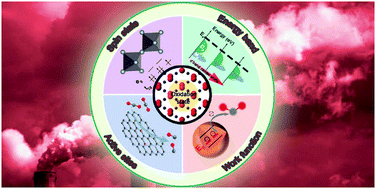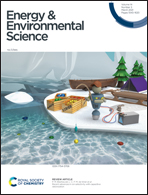Regulating the oxidation state of nanomaterials for electrocatalytic CO2 reduction
Abstract
Electrochemical carbon dioxide reduction reaction (CO2RR) converts CO2 into value-added chemicals and fuels to realize carbon recycling as a means to solve the problems of renewable energy shortage and environmental pollution. Recently, regulation of the oxidation state of catalysts has emerged as an effective method for designing better-performing CO2RR catalysts. The oxidation state of the catalyst was observed to influence the activity and selectivity of CO2RR, which is essentially based on promoting reactant activation, regulating the adsorption of intermediates and facilitating the C–C coupling. The CO2RR performance of various catalysts, such as Cu-based catalysts, non-Cu metal catalysts, atomically dispersed metal catalysts and carbon materials, can be efficiently improved through oxidation state regulation. In this review, we first discuss current understandings on how the oxidation state affects the catalytic properties of catalysts. Then, we summarize recent progress in strategies used to regulate the oxidation state of catalysts and their resultant performances toward CO2RR. In particular, we highlight recent advancements in in situ techniques that are used to uncover the dynamic evolution of the oxidation state of catalysts during CO2RR. We end this review by outlining the challenges and offering our personal perspectives on future research directions in this promising field.



 Please wait while we load your content...
Please wait while we load your content...